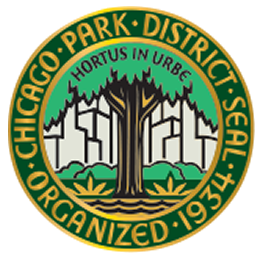201 E. 111th St.
Chicago, IL 60628
Hours
Park Hours
Description
Located in the Roseland community, Palmer Park totals 38.44 acres and features a fitness center, youth wellness center, gymnasium and multi-purpose clubrooms. Outside, the park offers an aquatic center, soccer field, baseball/softball diamonds, basketball /tennis courts, and playground. Many of these spaces are available for rental including our gymnasium, and multi-purpose clubrooms.
Park-goers can participate in seasonal sports, cheerleading, tumbling & gymnastics, arts & crafts.On the cultural side, Palmer Park offers Youth & Teen Dance. After school programs are offered throughout the school year, and during the summer, youth attend the Chicago Park District’s popular six-week day camp. Specialty Camps are offered in the summer as well, and include Teen Arts Camp
In addition to programs, Palmer Park hosts fun special events throughout the year for the entire family, such as holiday-themed events.
History
The South Park Commission acquired land for Palmer Park in 1904 as part of its innovative neighborhood park system. Conceived by superintendent J. Frank Foster, this system was based on a new type of park providing social services as well as breathing spaces to the City's congested tenement districts. The Olmsted Brothers landscape architects and D.H. Burnham and Co. architects designed the first ten neighborhood parks, which all opened in 1905. In addition to Palmer Park, these were Ogden, Sherman, Bessemer, and Hamilton Parks, and Mark White, Russell, Davis, Armour, Cornell Squares. Palmer Park became part of the Chicago Park District in 1934, when the City's 22 independent park commissions were consolidated into a new unified system. Later that year, Park District art director James Edward McBurney created three murals for Palmer Park as a Works Progress Administration project funded by the federal government. The three are: "Native Americans," "explorers," and "Dutch settlers." McBurney painted other notable Chicago murals at Wentworth School, Tilden High School, and Woodlawn National Bank.
Palmer Park was named for Potter Palmer (1826-1902), one of Chicago's most successful merchants. Palmer opened a dry goods store in 1852, which became known for remarkable customer service practices. Several years later, he sold the business to Marshall Field and Levi Z. Leiter. In the late 1860s, Palmer began buying property on State Street. Although Lake Street was then the city's commercial center, Palmer successfully shifted this activity to State Street, developing it as the city's major retail thoroughfare. Palmer was a member of the South Park Commission and vice-president and director of the World's Columbian Exposition of 1893.



















